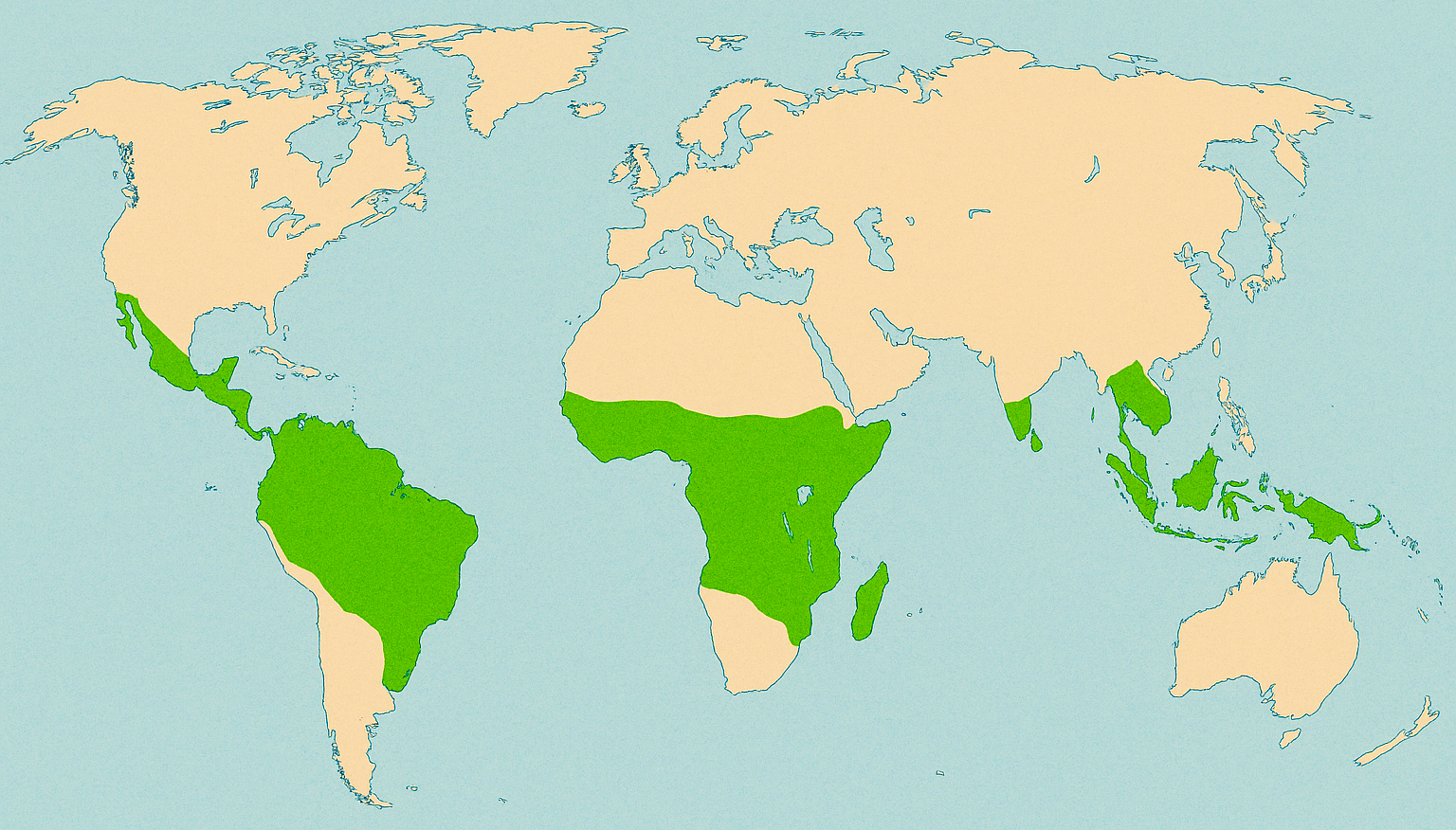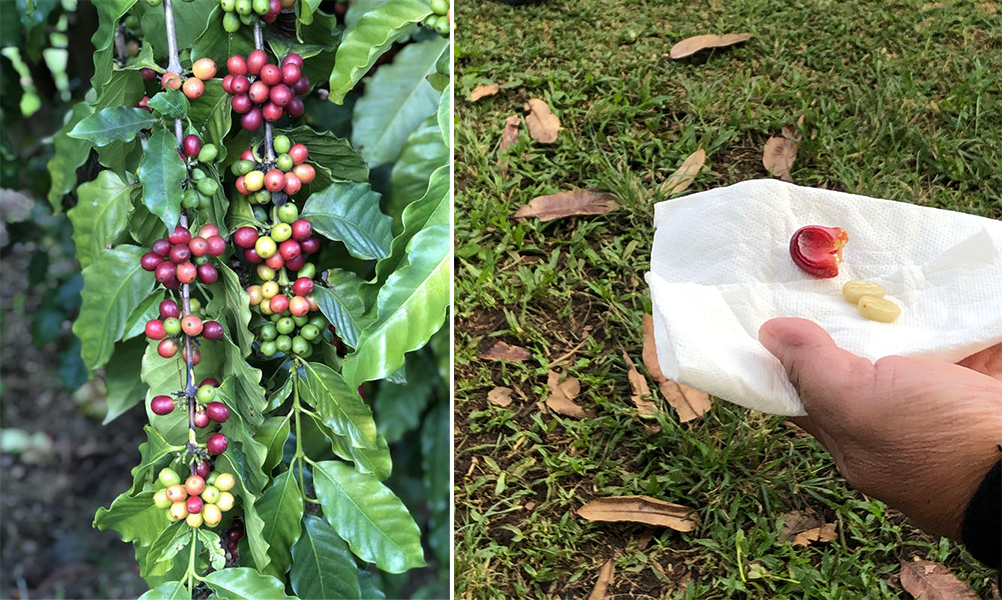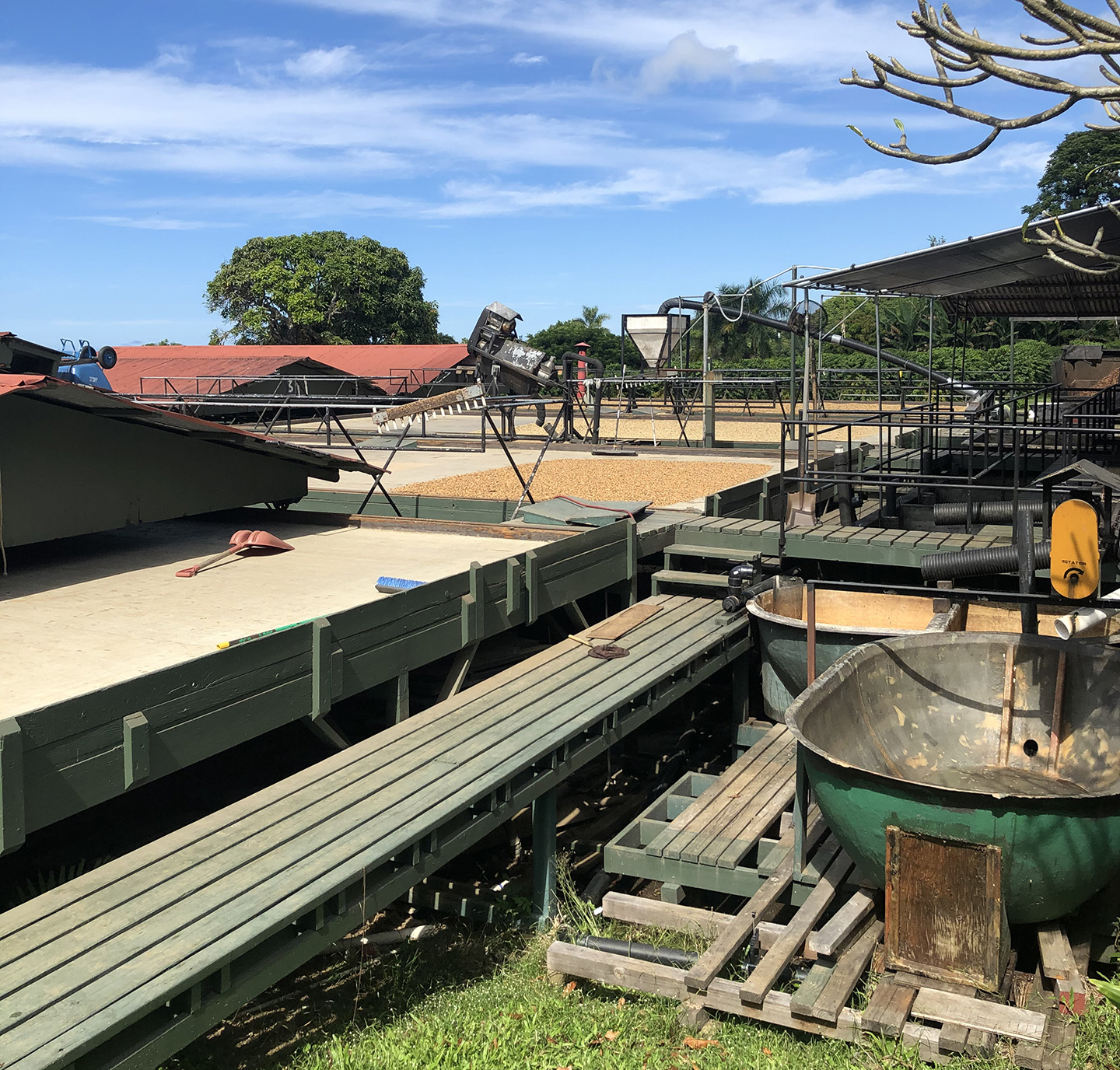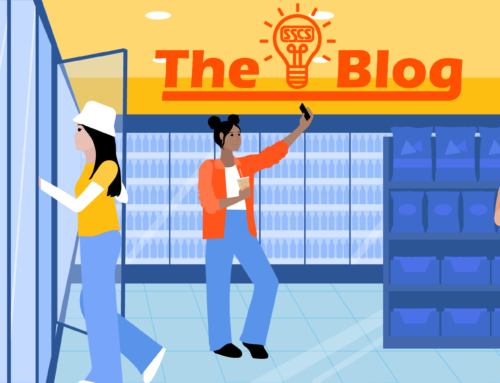
The Coffee You Think You Know (Part 1)
The variables that go into classifying coffee are complex enough to rival those for wine.
Geography
For something so commonplace, coffee is farmed in some of the most exotic places in the world: the uplands of Hawaii, the mountains of Brazil, the tropics of Sumatra, and that’s just a few examples. They, and the other major coffee-producing countries, are positioned in a global band known as the “coffee belt”:

The areas in green share tropical climates, rich soil, consistent rainfall, and enough elevation to keep temperatures moderate—all perfect for coffee. Arabica beans are the most widely consumed coffee beans globally, so we’ll keep our focus on that varietal for this post.
Beginnings
The African country of Ethiopia, dead center in the coffee belt, is known as the birthplace of coffee. Ethiopian legend[1] has it that in the 9th century, a young goat herder from the Kaffa region named Kaldi noticed his goats dancing and acting silly after eating the red berries of an unknown shrub.
Kaldi tried the strange fruit. It gave him an energy boost like nothing else. The local monks he showed it to soaked the red berries in hot water. The resulting beverage not only tasted delicious but also kept them awake during long nights of prayer.
The harvest
The rest is more history than legend, but coffee agriculture basics haven’t changed all that much since Kaldi’s days. It’s a commitment, too: seeds/seedlings take 3–4 years to develop into mature plants.
When coffee plants bring forward their “fruit,” it looks nothing like the bulk coffee beans you buy in a store. The industry calls them “cherries” for good reason, as you can see at bottom left.
Cherries then have to be dried out in the sun, and the bean removed from the rest of the fruit. You might not recognize a bean when it is first out of its husk, as it is light in color, as shown at bottom right:

Processing
After being picked the process continues with either:
- Wet processing, where cherries are pulped, fermented, and washed to remove mucilage.
- Dry processing, where cherries are dried whole, then hulled.
- Honey processing, where the coffee cherry is pulped to remove the outer skin, but some or all of the sticky mucilage (called “honey”) is left on the bean during drying.[2]
Beans are then dried to either in the sun or using mechanical dryers. The dried parchment layer (or dried fruit skin in natural process) is removed when drying takes place.

Roasting and (a lot of) other variables
Next the coffee fruit goes to the roaster, and when it is done, it will resemble the coffee bean most of us are used to seeing. As for how long those beans should be roasted? Well, that’s just one of the many variables that affect how the finished product looks and tastes. We don’t need to provide all the details, but the following table gives you a summary idea of the complexity involved:

Getting coffee into the hands of the people
All the effort that goes into coffee production would be somewhat futile without a means to get it into the hands of potential drinkers. For its first few centuries, you’d find coffee bartered at local trade markets, shared by Sufi monasteries with their communities, and sold as a medicinal tonic in early Middle Eastern Apothecaries, where it was recommended in small quantities as a stimulating tonic.
From almost the beginning, though, drinkers have craved variety, and for the first few centuries, that was usually limited to animal fat or spices. Those first drinkers would probably be overwhelmed today, though, because of the almost countless set of coffee choices, serving styles, and related alternative products that have become available in the last 40 or so years.
As is the case with so many retail trends, c-stores are out in front of the coffee boom, to the point that leading operators have successfully transformed their stores into a true coffee destination for discerning consumers. These owners back it up by offering more ways than ever for consumers to enjoy their favorite beverage. We’ll take a look at this side of the business in part 2, and might even mention how SSCS software can make diversification of coffee products less a headache and more a money-maker. See you then!

[1] According to Caffe Luxxe.
[2] Mucilage contains sugars and other compounds that influence flavor.






Leave A Comment